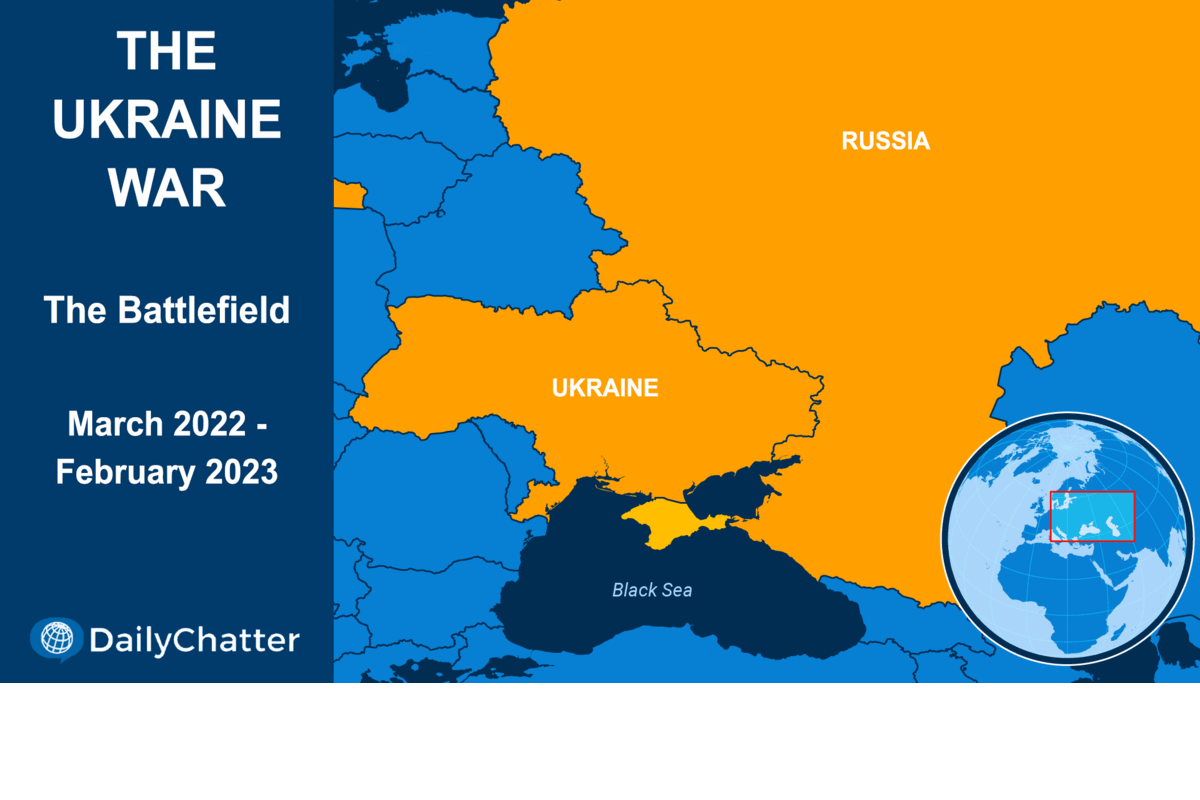Need to Know
February 24, 2023When Spring Comes
RussiaUkraine

|
Listen to Today's Edition
|
As the US and Germany send advanced armored vehicles to help Ukraine’s cause, Russia has lost almost half of its battle tanks, reported the Guardian recently. Half of Russia’s airborne troops have died in the war between the two former Soviet republics, added Newsweek. Russian artillery fire has also decreased by 75 percent in some regions, signaling a shortage of shells and other materials, CNN wrote.
Meanwhile, Russia has lost as many as 60,000 soldiers in the war, the Wall Street Journal wrote.
These setbacks and shortages are taking their toll. Recent Russian defeats in fighting around the city of Vuhledar, which was supposed to be a prelude to an expected spring offensive against Ukraine, have exposed the limits of Russia’s capabilities, the New York Times concluded.
“Russia’s actions over the past year have raised questions not only over the competence of its military and senior military leadership, but also over command cohesion,” said International Institute for Strategic Studies director-general and chief executive, John Chipman.
Yet, on Feb. 24, as the world marks the first anniversary of Russia’s invasion of Ukraine, Russia is preparing to send as many as 700,000 more troops into battlefields across the vast country’s western border, noted the New York Post. That’s more than twice the 300,000 soldiers drafted last year to prosecute the war, a move that led to hundreds of thousands of Russian men leaving the country to avoid conscription.
In that year, the war has upended the global order, noted the Associated Press. Countries around the world have been suffering shortages: In the Middle East and Africa, for example, it’s been wheat. Others have been grappling with sky-high inflation and spiking gas and oil prices, leading to mass suffering, especially in the Global South.
On the diplomatic front, the European Union has pulled together and heavyweights France and Germany have abandoned their prior romances with Russia. Former Soviet satellite countries such as Kazakhstan are quietly distancing themselves from their former mothership, the Economist noted. Yet China and some countries in the Global South, including South Arica and India, have sought a middle ground or even actively support Russia, blaming Europe and the US for the war, noted the Washington Post.
Closer to home, parts of Ukraine are completely destroyed and it will cost tens of billions of dollars to reconstruct the country. “In some areas, the ruins of apartment buildings and crumbled bridges are now the prominent features of Ukraine’s new war-ravaged landscape,” the Associated Press wrote. “Bodies lie in the streets, in gardens, in houses. Fire-gutted cars and armored vehicles dot the roads.”
Meanwhile, more than 8 million people have fled the country, mainly to Poland and other Eastern European countries, but also to the Middle East, Asia and elsewhere. Some have returned. Most want to.
“It is a tragedy and I try to keep going, but it’s difficult,” Iryna Zoria, 60, a teacher who fled Ukraine’s east for Poland, told the Post. “I always thought of myself as a strong woman, but it turns out that I’m less strong … than I thought I was.”
Meanwhile, the US and other NATO members are training tens of thousands of Ukrainian soldiers using Western arms and armor. In a press release, the British government said it expected to train 20,000 Ukrainian soldiers this year alone, in addition to the 10,000 trained in the last six months of 2022. The US trained around 3,100 between April and December last year, a Pentagon statement said. According to National Public Radio, American trainers in Germany are now also preparing almost every month around 500 Ukrainians to fight.
Russia’s new troops will likely be poorly trained, badly led and unmotivated, US defense officials recently argued, adding that they expected Ukraine to launch an offensive against Russia in the coming months with the goal of seizing the momentum in the spring, Voice of America reported.
Experts warned against expecting the fighting would continue to resemble the World War I-like trench warfare that has typified the conflict so far, the Financial Times wrote. They expected the Russians to employ new tactics, including a greater reliance on air support, to reframe the war and surprise their enemies.
This spring will not bring peace.
Not already a subscriber?
If you would like to receive DailyChatter directly to your inbox each morning, subscribe below with a free two-week trial.
Support journalism that’s independent, non-partisan, and fair.
If you are a student or faculty with a valid school email, you can sign up for a FREE student subscription or faculty subscription.
Questions? Write to us at hello@dailychatter.com.

